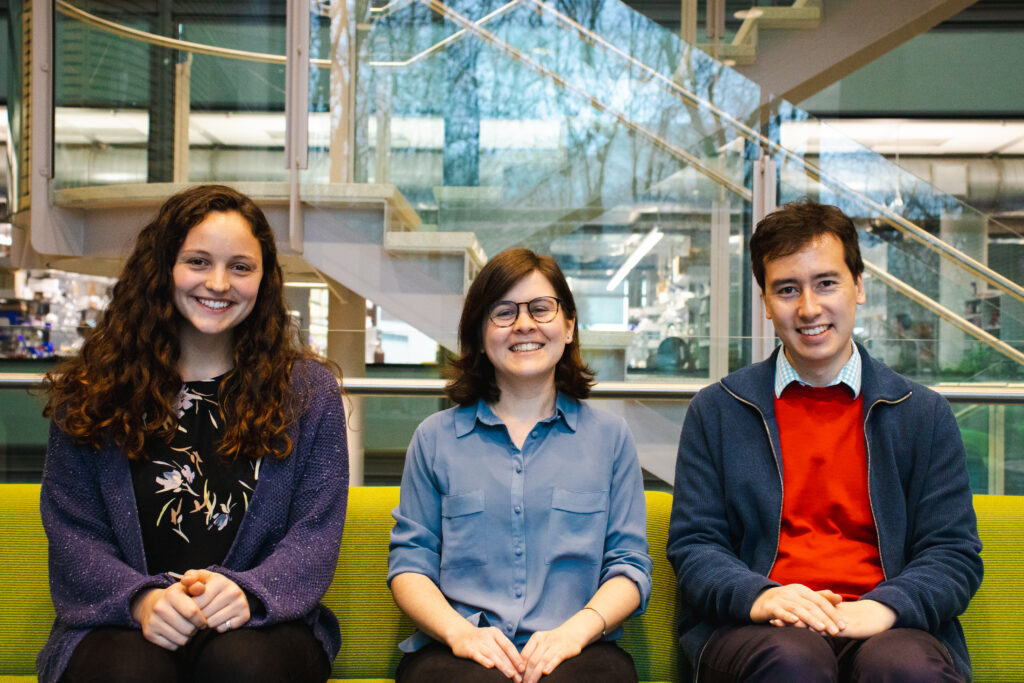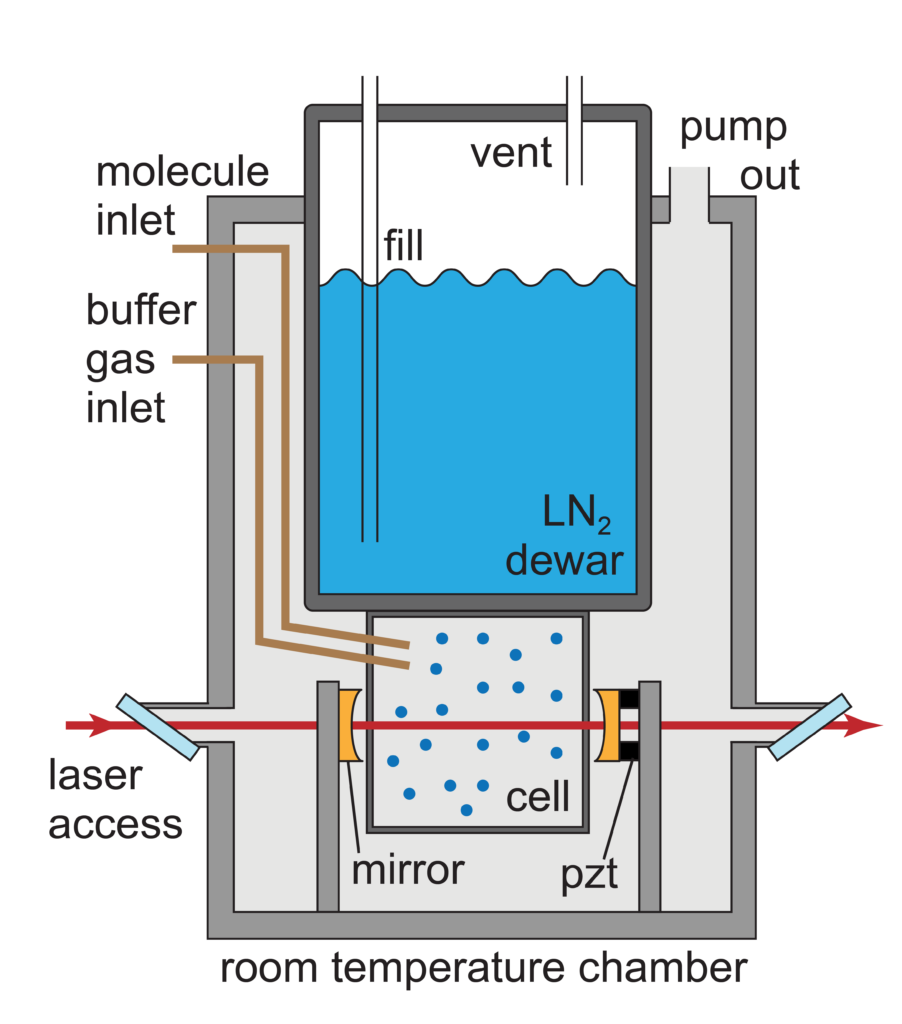Weichman Lab First to Strongly Couple Gas-Phase Molecules to Optical Cavity

In work that heralds exciting new advances in polariton research, the Weichman Lab demonstrates the first strong light-matter coupling of gas-phase molecules within an optical cavity.
For their proof-of-principle investigation, researchers filled a cavity with methane, shone a laser through it, swept the frequency, and recorded a split-peak spectrum of the transmission known as Rabi splitting–the very signature of strong interactions between light and matter.
They are the first to demonstrate this regime with a molecular gas.
The instrument underpinning this discovery is an optical cavity, a device that traps and concentrates light between two reflective mirrors, built from scratch in the lab.
Molecules can undergo reactions with very different proclivities, rates, and reaction outcomes when they’re interacting with an optical cavity, but scientists don’t know exactly why. The Weichman Lab’s new infrastructure provides a promising testbed for benchmark studies of cavity-altered chemistry in the emerging and little-understood field of polariton research.
Polaritons are quantum states with mixed identities of partial light and matter.
Their work also shows that interrogating polaritons in a low-density methane gas sample is not only possible but likely more advantageous than using samples in solution. The lack of solvent yields a cleaner look at what is going on within these systems.
“We’ve become interested in this problem of how molecules behave under strong coupling to an optical cavity,” said Assistant Professor Marissa Weichman. “The optical cavity confines a strong field of light in a small region of space. Then, we look at how the molecules in that region behave. There’s evidence in the literature that really strange things, as-yet unexplained, can happen to molecules inside cavities, but it’s been experimentally difficult to study chemistry under these conditions directly.
“So, we’ve built a new way to get at this in gas-phase molecules where we can prepare these really beautiful, clean, isolated systems and couple them to the cavity. We started with methane because it’s easy to work with. No one has shown what we’ve shown in any molecule in the gas phase. There’s a lot we can do moving forward to use this new platform to really understand what’s happening.”
The lab’s paper, Rovibrational Polaritons in Gas-Phase Methane, was published this week in the Journal of the American Chemical Society (JACS). This is the lab’s first independent publication.
Not done before
“Within our cavity, we have a gas cell in which we’ve cooled the methane down,” explained paper co-author Jane Nelson, a first-year graduate student in the Weichman Lab. “By cooling the methane, we’re able to get more molecules into the correct, low-energy quantum states. And by doing that, we can get a denser molecular sample that allows us to reach the strong coupling regime.
“The combination of these different techniques hadn’t been done before.”*
The lab-designed optical cavity gave researchers complete control over the concentration of molecules—their temperature and density—under investigation. At 8.36 centimeters in length, the cavity also operates on a longer length scale than is conventional, affording researchers more “room” to see what’s going on.

Schematic of the lab-built vacuum chamber containing the cavity mirrors and cell.
“There are other benefits to this cavity, too, since we can do spectroscopy from the side of the cavity. For example, we can shine a laser in,” said Adam Wright, lead author on the paper and a postdoc in the lab. “That’s how we actually intend to check how this affects chemistry, which is the ultimate goal of this project: does the formation of these polaritons mean that the chemical reaction changes?
“That’s really tricky to do with a micron-length micro-cavity. But with our large centimeter-scale cavity, it should be possible to find that out.”
Within two years of opening her lab at Princeton Chemistry, Weichman received a National Science Foundation CAREER grant, a Department of Energy Early Career award, and an American Chemical Society Petroleum Research Fund grant to study polaritons. The lab will use their new platform to hammer away at some of the fundamental questions surrounding these systems.
“For instance, to what extent do you need quantum mechanics to explain what we see here versus just classical physics and classical optics? That’s actually an open question in the field right now,” said Weichman.
“Everything we do as spectroscopists is still rooted in quantum mechanics because we’re using quantum transitions of molecules. The question is, do we also need to think of light as a quantum object here? It’s something we don’t quite have an answer for yet.”
This research was supported by the ACS Petroleum Research Fund under project PRF-62543-DNI6, and startup funds provided by Princeton University.
